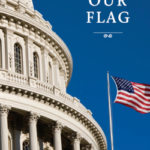Video profiles of seven African American federal judges, who overcame obstacles on their paths to the bench, are featured on the federal courts’ website. In their inspirational first-person narratives, they recount the challenges they faced growing up and offer uplifting insights. The four-minute videos are part of the federal courts’ Pathways to the Bench series.
Court Shorts: Jury Service, Hands-on Justice
Jury service is an example of hands-on participation in democracy. In a five-minute video, 11 federal judges talk about jury service as an opportunity for citizens to be part of the judicial process that has an impact on daily life. The video, which deals with Constitutional principles and the practicalities of jury service, is part of the Court Shorts video series that includes installments on the rule of law and separation of powers.
Dialogue on the Fourteenth Amendment
The American Bar Association Dialogue program provides lawyers, judges and teachers with the resources they need to engage students and community members in a discussion of fundamental American legal principles and civic traditions. This Dialogue on the Fourteenth Amendment is composed of three parts:
Part 1: Equal Protection and Civil Rights – Participants discuss the equal protection clause of the 14th Amendment and consider how Congress, through federal legislation, has worked to help realize its constitutional promise.
Part 2: Incorporating the Bill of Rights examines the concept of incorporation. Using a case study of Gitlow v. New York, this section provides a guide to how courts have applied the Bill of Rights, selectively, to the states using the 14th Amendment.
Part 3: Ensuring Equality and Liberty explores how the 14th Amendment has been interpreted by courts to protect fundamental freedoms, including individuals’ right to marry.
Lesson Plan: Choice Board – Researching Your Members in the U.S. House of Representatives
This lesson provides students with the opportunity to explore their members in the House of Representatives and how they represent their constituents as a fundamental part of civic literacy.
Lesson Plan: Choice Board – Researching Your U.S. Senators
This lesson provides students with the opportunity to explore their members of the U.S. Senate and how they represent their constituents as a fundamental part of civic literacy.
Congress and the Separation of Powers – Virtual Exhibit
Why does the U.S. Constitution separate the government into three branches? At the nation’s founding, the Constitution’s framers understood that executive, legislative, and judicial responsibilities differed, and they provided for these distinct functions. They also believed that concentrating authority in one body would result in tyranny. They therefore divided the government into legislative, executive, and judicial branches, so that no single part would become too strong, and empowered each to limit or “check” the powers of the others. This exhibit examines Congress’s unique role and the ways in which it can balance or dynamically shape and challenge the powers of two other branches.
The Constitution
This series of videos breaks down the different parts of the United States Constitution for students. In the videos, Kim and Sal interview constitutional scholars associated with the National Constitution Center, including Jeffrey Rosen, Heather Gerken, Ilya Somin, and Richard Garnett.
The Vietnam War Lesson Guide
Explore classroom lesson plans related to Ken Burns’s and Lynn Novick’s 10-part, 18-hour documentary series, The Vietnam War, which tells the story of one of the most consequential, divisive and controversial events in American history. The series explores the human dimensions of the war through the testimony of nearly 80 witnesses from all sides.
Our Flag

“Traditionally a symbol of liberty, the American flag has carried the message of freedom to many parts of the world. Sometimes the same flag that was flying at a crucial moment in our history has been flown again in another place to symbolize continuity in our struggles for the cause of liberty.”
Our Flag, a Congressional publication, briefly describes the history of the flag, and sets forth the practices and observances appropriate to its display (Senate Document 109-18). 2007.
Created Equal

The Created Equal project uses the power of documentary films to teach about the changing meanings of freedom and equality in America. The five films that are part of this project – “The Abolitionists,” “Slavery By Another Name,” “Freedom Riders”, “Freedom Summer” and “The Loving Story” – tell the remarkable stories of individuals who challenged the social and legal status quo, from slavery to segregation.